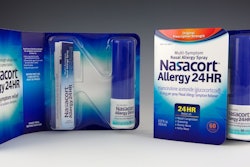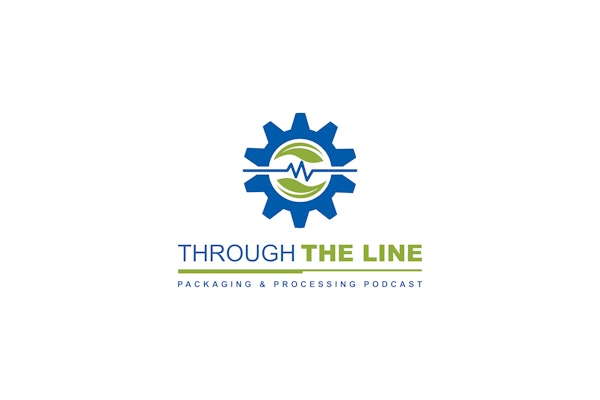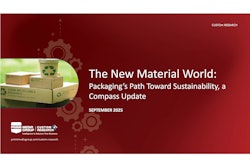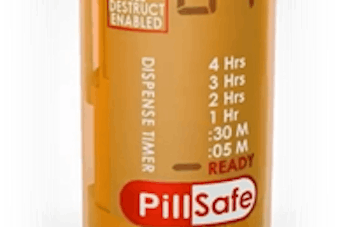Child-resistant (C-R) packaging is familiar to most of society; however, it behooves packaging professionals to have more than a passing familiarity with it for at least several reasons. One is that although C-R packaging has been federally mandated since the 1970s, the supplier industry is not static and new designs regularly appear. Another is that companies whose products don’t fall under the federal mandates nonetheless are free to voluntarily use C-R packaging. Yet another is that the self-suggesting purpose of C-R packaging can obscure the many intricacies that determine how well a particular design fulfills the purpose.
The regulators of C-R packaging
The Poison Prevention Packaging Act (1972) grants regulatory authority to the U.S. Consumer Product Safety Commission (CPSC), as covered in 16 CFR (Code of Federal Regulations). The Environmental Protection Agency (EPA) also regulates C-R packaging, as covered in 40 CFR.
For each agency, specifics such as definitions, products subject to the regulations, packaging performance criteria, and testing protocols are contained in the respective CFR. Much of the two CFRs are harmonized, and in general, their main difference is with products: 16 CFR pertains to pharmaceuticals, cosmetics, and household chemicals, while 40 CFR covers pesticides. Another way to generalize is to say that not all of the products regulated by the CPSC are inherently toxic (mouthwash, for example), but all of the products regulated by the EPA are.
Protection of which children and to what extent?
Children younger than five are the group that C-R packaging regulations are meant to protect. It’s an arbitrary cut-off, for a six-year-old is certainly capable of not appreciating a hazard residing in a certain product. The regulations further require that the packaging be “significantly difficult” to open and access the contents, within a “reasonable time.”
The tender years of the targeted group notwithstanding, there’s bound to be those who possess the precociousness, dexterity, or experimental luck that enable them to defeat the purpose of C-R packaging. The regulations don’t require that “all children” within the targeted group be unable to open and access. For that reason, care should be exercised to not refer to the packaging as child-proof.
Quantifying success
The fact that 100% effectiveness is not a requirement imposes the need for a minimum requirement to designate C-R packaging’s performance as acceptable, implying the need for testing. Both the testing and the pass-fail criteria are detailed in the aforementioned CFRs.
Basically, panels consisting of 50 children, divided into three age groups, are told to open the packaging. The testing time is 10 minutes, during which a child’s attempts can include use of the teeth. A child who fails to open the packaging within the initial 5 minutes is given a demonstration followed by an additional 5 minutes. The package fails an individual test whether opened during the first or second 5 minutes. In order for the packaging to pass overall, no less than 85% of the children must be unable to open it prior to demonstration and no less than 80% after the demonstration. When results prove inconsistent, additional panels of 50 children must be used; however, the total number of children testing should not exceed 200.
Who should conduct the testing?
End users should note that neither the CPSC nor the EPA endorses a particular C-R packaging. An end user, by its choice, implicitly warrants that the C-R packaging is fit for its intended use. Such a stance should be supported by testing, but performed by whom? No end user should undertake in-house testing without the requisite know-how; for, as this space has noted in other articles, the testing of children is not child’s play.
There are laboratories whose services include the testing of C-R packaging. Those laboratories should be conversant not only with the regulatory language that deals with testing but also with the related protocols from organizations such as ASTM. A capable laboratory also would give regard to certain particulars, for example: assuring an even male/female division; striving for an environment with minimum distractions since children are easily distracted; and, assuring that all test subjects appear free from signs of illness or other conditions that might negatively affect their participation.
Then again, suppliers of C-R packaging are known to promote their offerings by citing testing results. Before an end-user relies on those results consideration should be given to whether the supplier conducted its own testing, in which case, a certain amount of objectivity might be missing. It’s more convincing when a supplier can cite independent testing results.
Closures don’t bring closure
C-R packaging is associated most commonly with closures, the various styles of caps that top various bottles; nonetheless, the need for C-R packaging derives from the characteristics of the product and not just from a packaging category. That’s why C-R packaging includes unit-of-dose, blisters being the prime example. Owing to the nature of unit-of-dose, CFR 16 modifies its performance requirements: the packaging must prevent the child from opening and obtaining 8 units of the product or a toxic amount, whichever is less.
Youth wasted on the young?
It’s an age-old divide: what favors the young sometimes disfavors the not-so-young. Acknowledging that truth, the regulations additionally require that C-R packaging not be difficult to open for “normal adults” (the regulations include criteria for the testing of adults). There’s more relief in that marketers of certain products that require C-R packaging are permitted to also market the product in conventional packaging, provided that it carries the written warning that the packaged product is not for households with young children.
In summary, companies that currently use C-R packaging should stay apprised of the regulatory changes in addition to new offerings from suppliers. In a similar vein, companies not currently mandated to use C-R packaging should not assume that the exemption is permanent. Those companies should look across horizons for trends so as to be able to get in front of them; after all, C-R never should stand for company-resistant.
____________________________________________________________________________________________
Sterling Anthony is a consultant, specializing in the strategic use of marketing, logistics, and packaging. His contact information is: 100 Renaissance Center- P.O. Box 43176; Detroit, MI 48243; 313-531-1875 office; 313-531-1972 fax; [email protected]; www.pkgconsultant.com






















